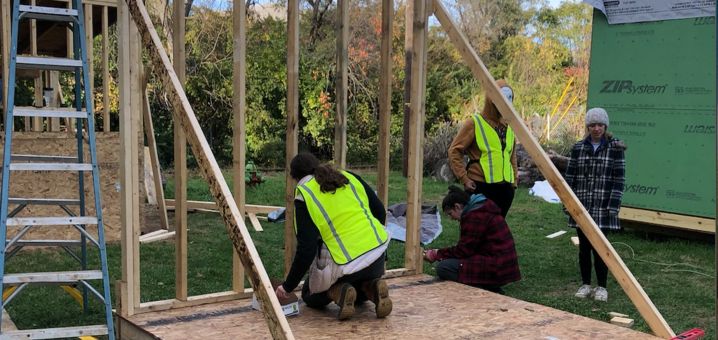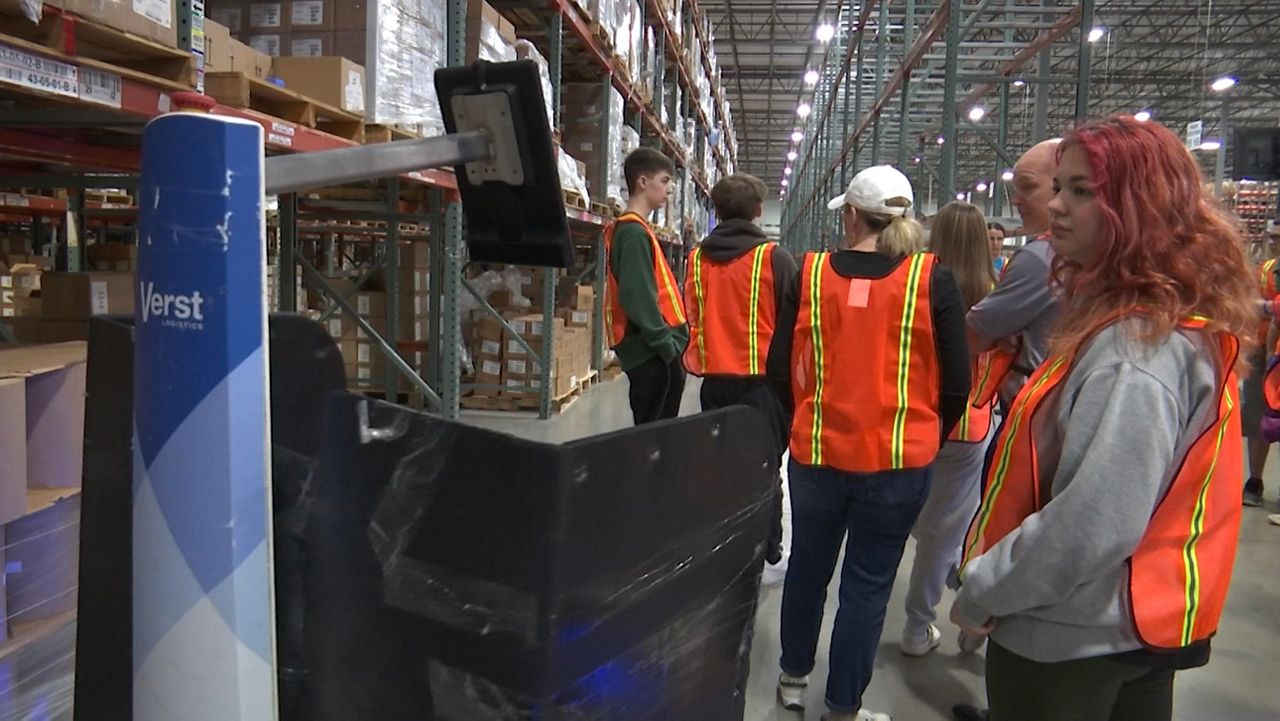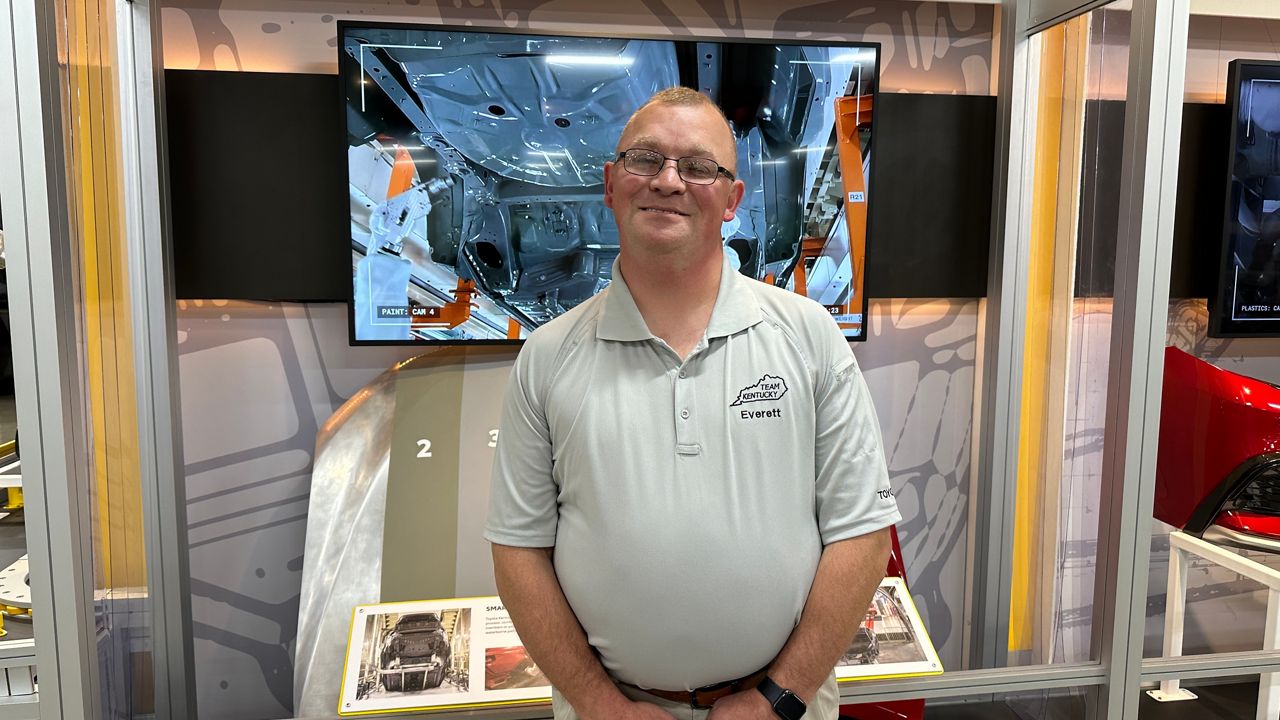LEXINGTON, Ky. — A group of third- and fourth-year architecture students at the University of Kentucky College of Design took to the field to learn from hands-on experience. As part of Bruce Swetnam’s design-build studio, he tasked the students with not only designing but building full-size prototypes of their projects.
What You Need To Know
- Project began as idea to shelter the homeless
- Sawmill allowed students to see project constructed
- Sustainability important to designers
- Building being used to house tornado victims in western Kentucky
“The idea that you can learn, not just conceptually but learn with your hands and with your eyes and you can smell the project — it's a holistic way of learning,” said Swetnam, who is the Kentuckiana Masonry Institute Endowed Professor in the UK School of Architecture. “We were charged with developing a pavilion to house a sawmill the university just acquired.”
The idea behind the sawmill is taking trees that were diseased or being taken down for construction from campus and using that material for construction.
“One group of the studio worked on this pavilion, and it's complete and worked out really well,” Swetnam said. “The other half of the studio was working on developing housing for people in different stages of homelessness. We did a lot of research and came up with different scales of projects. Some were very small and portable. Some were much larger and some were modular and could be assembled into a larger unit that would have bathrooms, kitchens, a living room, bedrooms and that sort of thing.”
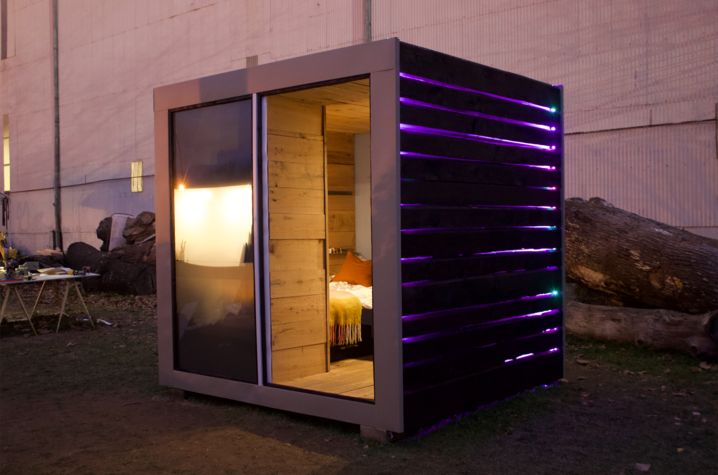
As the fall 2021 semester was ending, devastating tornadoes hit Western Kentucky. It was then that Swetnam and his students saw an opportunity to use their idea to aid in the relief efforts.
“It’s honestly a great feeling, knowing our hard work is being put to use in a community that really needs it,” said Jackie Russell, UK architecture student. “We built our project for a purpose and to know it is being used for that is something we can pride ourselves on.”
UK architecture student Allyson Middleton said her thought process was designing something that could be mass-produced, constructed and taken down easily and be multifunctional.
“At first it was always, like, a homeless shelter,” Middleton said. “Just people getting off of the streets and trying to help them.”
Swetnam said some of the smaller units were designed to be clustered around a community kitchen and toilet area to provide security and thermal comfort near a library, or other resource that would allow people to work their way out of homelessness. Another larger design had a toilet, shower, laundry room, kitchen, space for a desk, a sleeping area and a living area.
“As a family would expand, they could group them together to be more or less a duplex, or they could have two bedrooms, or maybe even three,” Swetnam said. “They can be expanded.”
Architecture student Chloe Kelly was part of a team that designed an 8-by-8 foot shelter that included the basics — a bed and shelves that could be moved based on need.
“It’s designed for people who are transitioning from homelessness,” she said. “It was designed just to have sleeping space and a living area with storage. It’s not quite at the scale of the bigger tiny houses, but they were meant to be aggregated together around ones that had bathrooms and kitchens.”
Architecture student Lauren Major said having an on-site sawmill was beneficial for several reasons, such as providing shelter for the workers who milled the lumber from campus, but also for giving students at UK access to the experience of seeing the process.
“We’ve focused a lot on sustainability, which was a big part of both our design and the future of agricultural practices,” Major said. “It taught us a lot. Typically, we just design on our computers and make drawings, but this time, we actually got to build it ourselves to understand the structural techniques required. It was a great learning experience.”
Other third- and fourth-year UK architecture students working on the projects were Alan Hammell, Mohammed Aliessa, Chris Marra, Riley Day, Noah Martin, April Morris, Benjamin Rudloff, Morgan Wesley and Kayla Spies.
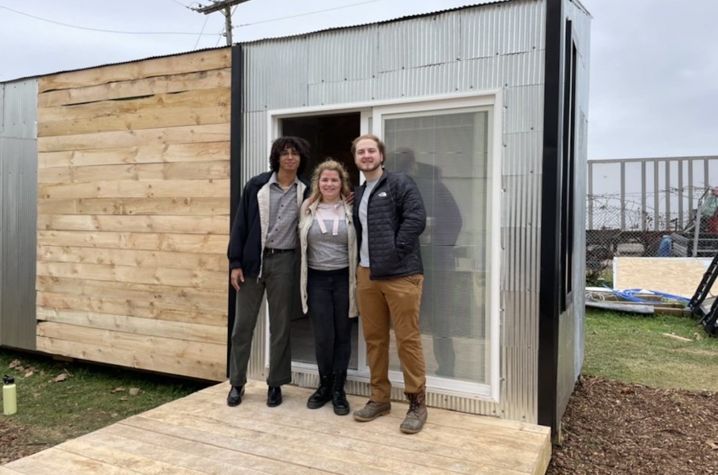
“The only way you can be a good mentor is if you have really great mentees,” Swetnam said. “They have all been such a joy to work with. Everybody showed up even in adverse conditions. Everybody was eager to learn, and we were all in this together. Every one of these students has embraced this idea of using their talents in architecture to serve the community in one way or another. I think that’s one of the most rewarding things we can do as architects.”
For both projects, they gave the students a set budget, clients and deadlines, just as they would experience in their career field.
“This class was a really great learning experience, just because I feel like from now on, we will never design anything the same because we know the hiccups that we had to work through and how to fix them,” said Grace Butler, a fourth-year architecture major. “We even had to change our design a bit just because of material issues, or because of time, and it was really a great learning experience to battle those issues in a quick design setting.”
Within the habitat for the homeless projects, there were several types of shelters designed, based on different stages of homelessness on which the students conducted thorough research. Butler, Lauren Davis, Russell and Kelley built and designed the 8-by-8 foot shelter. The 8-by-24 habitat, which included electricity and plumbing, was built and designed by Middleton, Greg Vergara, Joe Schulte and Justin Kirk.
“We have done some other design-build projects, but until this project, everything had been very conceptual,” Davis said. “Being in this experience, with the frustration and failure, but then to see the reward of those struggles has been amazing.”
The shelter idea is getting attention.
“I actually have been approached by some entrepreneurs that are interested in producing these at a larger scale and mass-producing them for using during a disaster,” Swetnam said.





